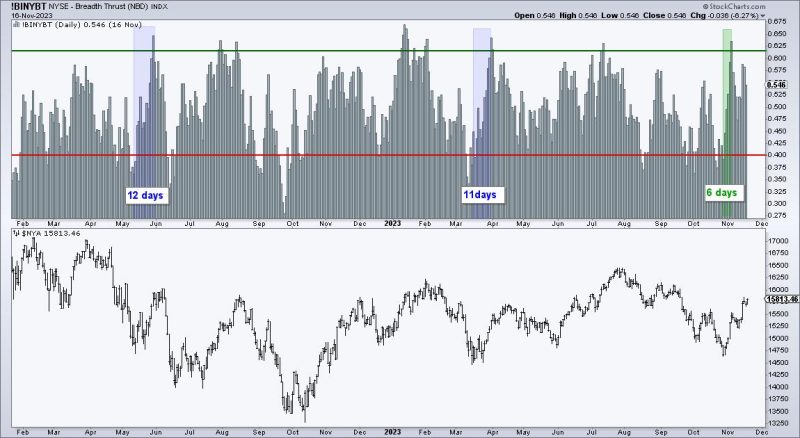Charting the S&P 1500: Zweig Breadth Thrust and More
Researching and understanding the performance of the S&P 1500 index is an important task for investors. A closer look at this index can reveal useful insights about the state of the overall market and guide investors in making informed decisions. One indicator that investors can use to examine the S&P 1500 is the Zweig Breadth Thrust (ZBT).
The ZBT was developed by Dr. Marty Zweig in the 1970s. It is based on the supply and demand volumes of the S&P 500 and other different stocks. When the supply or demand of a stock exceeds a certain measure, it triggers a buy or sell signal. The ZBT aims to measure the overall price action of the S&P 500, giving investors a way to track the market’s general direction.
The ZBT is not the only tool investors can use to look at the S&P 1500. One of them is the Ratio of Advancers to Decliners (RAD). This is a simple bellwether indicator. It gives investors an idea of the general sentiment of the market by measuring how many stocks are rising compared to those that are falling. RAD readings below .95 indicate an oversold market, while readings above 1.10 indicate an overbought market.
The Relative Strength Index (RSI) is another tool investors can use to analyze the S&P 1500. This indicator measures the price and volume movements of a stock. It is used to spot changes in the market’s underlying trends and alert investors to potential turning points in the stock prices.
Finally, the Technology Charts is a tool that investors can use to measure the overall performance of technology stocks, one of the major sectors of the S&P 1500. It measures the daily and monthly performance of technology stocks. It is a useful tool for investors looking to diversify their portfolio across the sector.
Overall, these tools are useful in giving investors an idea of the state of the overall market and helping them make informed decisions. By combining these various tools and indicators, investors can effectively analyze the S&P 1500 and spot potential entry and exit points. As such, these tools can be a valuable asset in any investor’s toolbox.






